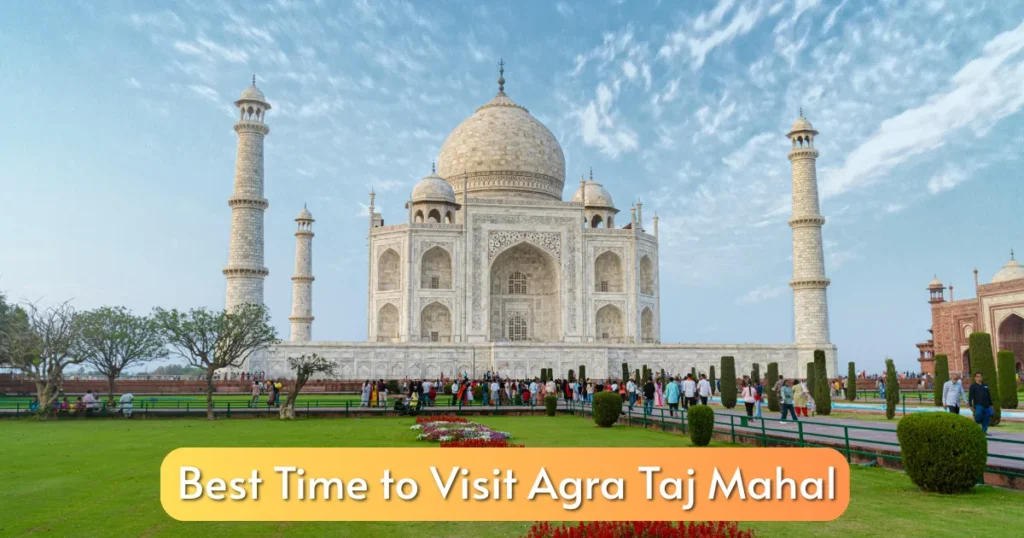Agra is not just about the Taj Mahal—it’s a city that breathes through its streets, bazaars, and timeless monuments. One such monument is the Jama Masjid in Agra, an architectural and cultural treasure often overshadowed but never outshined. Located near Agra Fort and bustling Kinari Bazar, this magnificent mosque is a place where history whispers, prayers echo, and artistry lives on in red sandstone.
Here’s your complete travel guide to the Jama Masjid, brought to you by Agra Tourism.
Table of Contents
ToggleHistory of Jama Masjid in Agra – A Gift of Faith and Architecture
The Jama Masjid was built in 1648 by Shah Jahan’s daughter, Princess Jahanara Begum. It’s one of the largest mosques built during the Mughal era and stands tall as a symbol of Islamic architecture and spiritual devotion.
- Why It Was Built:
- Dedicated to the Friday congregation and daily prayers.
- A mark of Jahanara’s religious devotion and Shah Jahan’s architectural legacy.
- Construction Details:
- Built using red sandstone with white marble detailing.
- It took around 6 years to complete with thousands of artisans involved.
- Unique Features:
- No minarets, unlike most Mughal mosques.
- The mosque is elevated on a platform with a large courtyard and beautiful domes.
- Historic Importance:
- Served as a central location for religious and community gatherings during Mughal rule.
- Survived multiple restorations yet retains its original grandeur.
The Jama Masjid in Agra is not just a religious site—it’s a cultural icon that narrates the story of Mughal architecture and royal patronage.
Architecture & Interior – A Masterpiece in Red and White
What makes the Jama Masjid in Agra architecturally distinct is its bold yet harmonious blend of red sandstone and white marble.
- Exterior Grandeur:
- Three majestic domes crowned with white marble in contrast with red stone.
- A massive arched entrance welcomes visitors into its sacred space.
- Interior Elegance:
- Delicate floral and geometric patterns on walls and ceilings.
- Intricately carved mihrabs (prayer niches) and sandstone pulpits.
- Symmetry in arches, doors, and lattice screens.
- Courtyard View:
- Large open space for congregational prayers.
- View of local life in Kinari Bazar from one side, making it a cultural bridge.
The architecture of Jama Masjid in Agra reminds visitors of the balance between art and faith—a space where both soul and sight find satisfaction.

Timings & Best Time to Visit Jama Masjid in Agra
Timing your visit is essential for a peaceful and fulfilling experience at the Jama Masjid in Agra.
- Opening Hours:
- Monday to Thursday: 7:00 am – 12:00 pm & 1:30 pm – 6:30 pm
- Friday: Closed
- Saturday & Sunday: Same as weekdays
- Best Time to Visit:
- Early morning for peaceful photography and fewer crowds.
- Late afternoon to capture the golden sunlight on red sandstone.
- Seasonal Travel Tip:
- October to March is pleasant and ideal for exploring the mosque and nearby bazaars.
- Avoid peak noon during summers due to open courtyard heat.
Whether you’re a heritage lover or a spiritual traveler, planning your timing well ensures a meaningful experience at the Jama Masjid.
Jama Masjid Agra Entry Fee, Photography & Guidelines
Unlike many other monuments in the city, the Jama Masjid welcomes visitors without any entry charges.
- Entry Fee:
- Entry: Free for all
- Still Photography: ₹30
- Videography may not be allowed without special permission
- Visitor Guidelines:
- Dress modestly, covering arms and legs.
- Remove shoes before entering the prayer area.
- Avoid visiting during prayer times if not participating.
- Tourist Tip:
- Carry a scarf or shawl if you’re a woman visitor.
- Donations are welcome but not mandatory.
The Jama Masjid in Agra offers a budget-friendly yet enriching cultural experience for all travelers.
How to Reach Jama Masjid – Address & Local Connectivity
Getting to the Jama Masjid in Agra is easy as it’s centrally located near major landmarks.
- Address:
- Jama Masjid Rd, Subash Bazar, Kinari Bazar, Hing ki Mandi, Mantola, Agra, Uttar Pradesh 282003, India
- By Road:
- Auto-rickshaws and e-rickshaws are easily available from Agra Cantt or Agra Fort.
- By Train:
- Agra Fort Railway Station is the closest (5-minute walk).
- By Air:
- Nearest airport is Agra Airport (about 6 km away).
- Nearby Landmarks:
- Agra Fort (walking distance)
- Kinari Bazar (right next door)
- Taj Mahal (approx. 2.5 km)
The location of Jama Masjid in Agra makes it a perfect stop during your city sightseeing tour.
Nearby Attractions to Explore Along with Jama Masjid
Make the most of your trip by combining a visit to Jama Masjid in Agra with these nearby gems.
- Agra Fort: A UNESCO site just across the road—explore red sandstone halls, palaces, and mosques.
- Kinari Bazar: Perfect for buying bangles, handicrafts, perfumes, and traditional sweets.
- Mankameshwar Temple: A sacred Shiva temple within 1 km distance.
- Taj Mahal: End your day at the world’s most loved monument, just 10 minutes away.
The charm of Jama Masjid in Agra amplifies when experienced with the living streets and heritage of the city.
Travel Tips for Visiting Jama Masjid
Here are some expert travel tips from Agra Tourism to ensure a smooth and respectful visit:
- Footwear Protocol: Carry a plastic bag for your shoes or leave them at the shoe stand.
- Respect Prayer Time: Avoid clicking photos during prayers; maintain silence.
- Go with a Guide: Local guides can share stories about Jahanara Begum and Mughal life.
- Stay Hydrated: Carry water especially if visiting during summer.
- Local Language Help: Basic Hindi or having a guide helps while interacting with shopkeepers nearby.
Following these simple tips will enhance your experience of visiting Jama Masjid and leave you with meaningful memories.
Why Jama Masjid is a Must-Visit for Every Traveler
The Jama Masjid in Agra is more than a historical monument—it’s a living cultural space.
- For Heritage Seekers:
- Mughal architecture, rare carvings, and peaceful ambiance.
- For Photographers:
- Rustic domes, lively bazaars, and spiritual scenes.
- For Devotees:
- A place of deep faith, especially during Ramadan and Eid.
- For Budget Travelers:
- Free entry and plenty of affordable local food and shopping nearby.
This mosque bridges the grandeur of the Mughal Empire with the simplicity of everyday Indian life.
FAQs – Jama Masjid in Agra
Q1. Is there any entry fee for Jama Masjid in Agra?
A: Entry is free. Still photography charges ₹30.
Q2. What are the mosque timings?
A: 7:00 am to 12:00 pm and 1:30 pm to 6:30 pm from Monday to Thursday and weekends. Closed on Fridays.
Q3. Can non-Muslims visit Jama Masjid in Agra?
A: Yes, respectful visitors of all faiths are welcome.
Q4. Is it close to Agra Fort?
A: Yes, it’s located just across the road from Agra Fort Railway Station.
Q5. How much time does a visit usually take?
A: Around 30–45 minutes for a relaxed visit.
Q6. Is photography allowed inside?
A: Yes, with a ₹30 fee for still photography. Avoid clicking photos during prayers.
Q7. What is the dress code for visiting?
A: Modest attire is advised. Avoid sleeveless tops or shorts.
Q8. Can we offer prayers here as tourists?
A: Yes, Muslim visitors can join prayer; others are welcome to observe respectfully.
Q9. Are guides available on-site?
A: Yes, local guides can be found near the entrance or arranged through Agra Tourism.
Q10. What is the best time of day to visit?
A: Early morning or late afternoon for cooler temperatures and softer light.
Conclusion – Discover the Soul of Agra Beyond the Taj
The Jama Masjid in Agra is a powerful reminder that Agra’s beauty lies not only in its world-famous monuments but also in its living heritage. A visit here gives you a glimpse into the city’s spiritual heartbeat and a chance to walk the same stones as royal princesses, worshippers, and travelers of centuries past.
📍 Add Jama Masjid to your Agra bucket list
📞 Contact Agra Tourism today for guided city tours
🌐 Visit our website for customized Agra travel experiences













